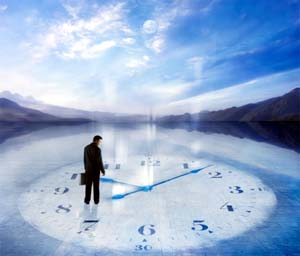Jan 07, 2026
Jan 07, 2026
 Calendar “date” that we are so familiar with in our daily life is based on solar calendar. English calendar is a solar calendar. The basis for solar calendar is the rotation of the Earth around the Sun. It takes earth approximately 365 ¼ days to complete its rotation around the Sun. The English calendar that most of us use today divides the 365 days of earth’s period of rotation around the Sun in twelve months. The leap year, which occurs once every four years, accounts for ¼ day per year.
Calendar “date” that we are so familiar with in our daily life is based on solar calendar. English calendar is a solar calendar. The basis for solar calendar is the rotation of the Earth around the Sun. It takes earth approximately 365 ¼ days to complete its rotation around the Sun. The English calendar that most of us use today divides the 365 days of earth’s period of rotation around the Sun in twelve months. The leap year, which occurs once every four years, accounts for ¼ day per year.
Similar to solar calendar lunar calendar is also popular and widely used in the Asian countries such as China, Pacific-rim countries, Middle East countries, and India. Lunar calendar, which is believed to have originated in India, has been around for a very long time, even long before the solar calendar.
The lunar calendar is based on the moon’s rotation around the Earth. The lunar month corresponds to one complete rotation of Moon around the Earth. Since this period of rotation of moon around the earth varies, the duration of lunar month also varies. On average, the lunar month has about 29 ½ days. In addition to moon’s rotation around the earth, the lunar year is based on earth’s rotation around the Sun. In general, the lunar year has twelve lunar months of approximately 354 days, thus making it shorter by about 11 days than the solar year. However, the lunar calendar accounts for this difference by adding an extra lunar month about once every 2½ years. This extra lunar month is known as the “Adhik Mas” in India ("Adhik" means extra and the "Mas" means month). The concept of placing of the extra month, meaning why and when should it be inserted between certain lunar months is as follow.
According to sidereal zodiac system 1 Sun enters the first zodiac sign Aries ("Mesh") on about April 15 of every year. And about 15th of every month Sun enters the next sidereal zodiac sign. For example, as we know, every year on "MakarSankranti" the Sun enters the sidereal zodiac sign Capricorn on about January 14. While Sun remains in a zodiac sign for approximately one month, the Moon travels through all twelve zodiac signs in about 27 ½ days. As a result, on average, once about every two and half years, the entry of the Moon in the same zodiac sign occurs twice while the Sun remains in the same sign. In other words, when the Sun is traveling through the same zodiac sign, the month during which two new moons occur, happens once about every 2 ½ years. The lunar month corresponding to the period between these two new moons is treated as the extra month or the "Adhik Mas". Thus, if the "Adhik Mas" occurs at the beginning of the lunar month "Chaitra" 2, then it’s called as "Adhik Chaitra", and the following lunar month would be then the regular or "Neej" lunar month "Chaitra".
The concept of the "Adhik mas" (the extra month) is similar to the “Blue Moon” in the West, which occurs almost with the same frequency of 2 ½ years. Blue moon is the second full moon when two full moons occur in the same month. Naturally the blue moon must occur towards the end of month (some where between 29th,30th,or 31st of the month).
Recall that the entry of Sun in a sidereal zodiac sign occurs around the middle of the calendar (solar) month (near 15th of the month), thus, sun stays in a sidereal zodiac sign from about 15thof a month to about 15th of the next month. Since for "Adhik Mas" to occur, two new moons must occur during when sun remains in the same zodiac sign. Consequently, those new moons must occur near 15th of the successive months. As a result, around the time of "Adhik Mas", the successive full moons are very likely to occur near the beginning and the end of the same month. Indeed, the occurrence of the blue moon usually precedes the "Adhik Mas."
1. This system of zodiac is popular in India
2. The Indian lunar year begins on the new moon day, which usually occurs near the beginning of the Spring season. The twelve lunar months are: Chaitra, Waishakh, Jeshta, Ashadh, Shrawan (Sawan), Bhadrapad (Bhado), Ashwin, Kartik, Margshirsh, Paush, Magha, Falgoon (Fagan)
05-Oct-2000
More by : Jagdish C. Maheshri